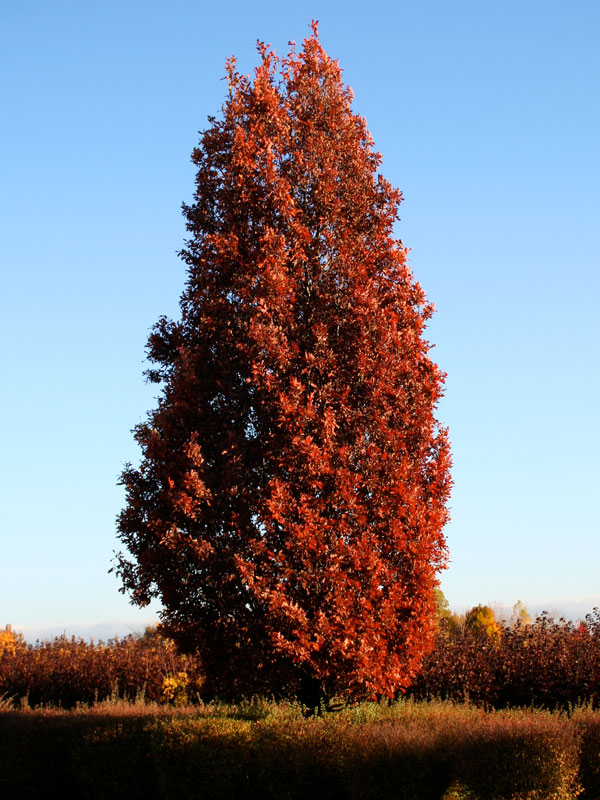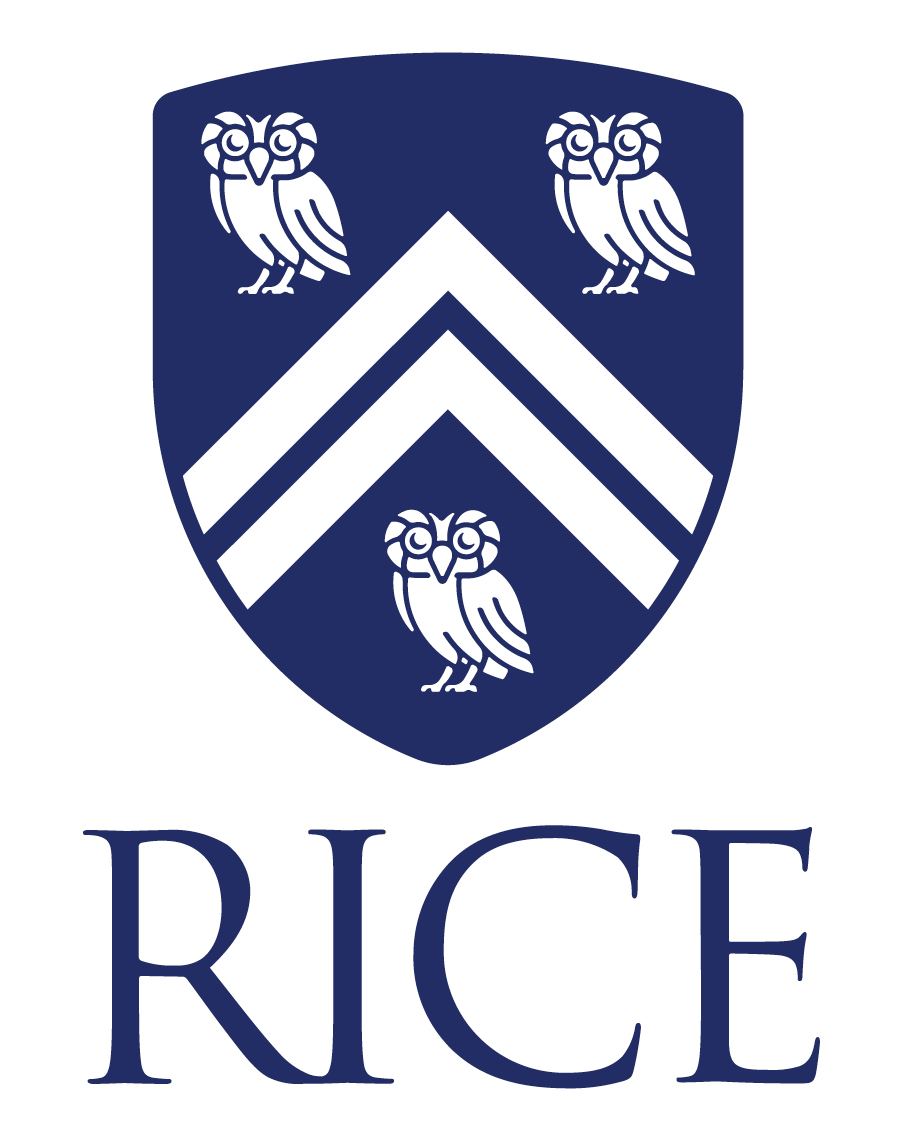Editor's Picks
Plant Focus
James MacEwen and Steve Potter
This oak, a naturally occurring hybrid between the Old World pedunculate oak (Quercus robur) and the New World white oak (Q. alba) was first recorded from Jamaica Plain, Massachusetts, USA in 1923. It was found on the west side of Centre Street, on a wooded hillside, by botanical illustrator C.H.L. Gebfert and was reported to be fruiting abundantly (Palmer 1948). The presence of either of the putative parent species was apparently not noted. This was the type specimen that was formally described by Ernest Palmer of the Arnold Arboretum thus:
Arbor ad 10-12 m. alt., foliis obovatis, profunde incisis lobis 7-9 obtusis apice obtusis basi leviter contractis subcordatis vel auriculatis; petiolis 5-10 mm. longis. Fructus ovatus 1.5-2 cm. longus pedunculatus; squamis cupulae rotundae paulis crassis (Palmer 1948).
(Tree to 10-12 m height, with obovate leaves, deeply incised with 7-9 obtuse lobes, obtuse at the apex, slightly contracted at the base, subcordate or auriculate; petioles 5-10 mm long. Fruit ovate 1.5-2 cm long, pedunculate; cupule scales rounded, slightly thick.)
In 1936 John Clymer Swartley found two specimens of the same hybrid on a farm near Horsham, Pennsylvania. It was reported that these trees had been grown from acorns collected from a tree in the vicinity of Ivy Hill Cemetery on an extension of the Easton Highway. A large pedunculate oak was growing near the road, and both white oak and swamp white oak (Q. bicolor) were recorded from the vicinity. A further specimen, which had been collected in 1917 from a tree growing in the Arnold Arboretum (at the time known as Harvard Botanical Garden), appeared to be a similar hybrid (Palmer 1948).
Schreiner and Duffield (1942) and Piatnisky (1960) independently mention an artificial cross between the parent species (Hardin 1975).

James Hardin (1975), also of the Arnold Arboretum, reported that “This hybrid can be recognized by the bark, which is medium gray and only slightly flaky or furrowed, and by the leaves, which are glabrous and usually smaller than those of typical white oak and which show a tendency toward a truncate or narrow cordate base and a very short petiole. The number of leaf lobes and degree of dissection are too similar in the parental species to be used for identification.”

Thus, spontaneous hybrids have occurred from time to time in the USA within the natural range of white oak, where introduced pedunculate oak has been planted. As far as we are aware, there has been no reciprocal hybrid in Eurasia, where white oak has been introduced to pedunculate oak’s home range. Trees and Shrubs Online notes that “Although introduced to Britain early in the 18th century, it [Q. alba] has, after many trials, proved a failure in this country, though perhaps not so complete a failure as was suggested in previous editions of this work.”
The first author has noted the impressive growth rate of another intercontinental oak hybrid, Q. ×vilmoriniana (Asian Q. dentata × European Q. petraea) at Chevithorne Barton in Devon, England, and speculated as to whether such hybrids display particular hybrid vigor. Certainly Q ×bimundorum cultivars in both Britain and the USA perform very well.
The Tree Register of the British Isles records a specimen of the hybrid (ID 51123) growing at West Dean House, Chichester, West Sussex, England, with a height in 2022 of 16 meters (52 feet 6 inches) a stem diameter of 63 centimeters (2 feet) and a girth of 198 centimeters (6 feet 6 inches). A young specimen (ID 278886) of the cultivar 'Crimschmidt’ growing in the Cherry Tree Arboretum near Woore in Shropshire, England is recorded at 6.4 meters high (21 feet) with a stem diameter of 16 centimeters (6 inches) and a girth of 51 centimeters (1 foot 8 inches).

Several named cultivars of this hybrid oak are in cultivation, the best-known being Q. ×bimundorum 'Crimschmidt', available under the trademark CRIMSON SPIRE™ and selected by the nursery of J. Frank Schmidt & Son of Boring, Oregon, USA. It was selected as a chance seedling in a row of Q. robur seedlings, which were grown from seed collected off a fastigiate Q. robur in a cultivated area in Champaign, Illinois, USA, with Q. alba trees growing in the vicinity (Wandell 1994).
The J. Frank Schmidt & Son Nursery describes it as follows: “CRIMSON SPIRE™ Oak is a landscape exclamation point. This fast-growing, columnar tree combines the best characteristics of its English (Q. robur) and White Oak (Q. alba) parents to deliver a handsome, adaptable, drought tolerant, disease-resistant shade tree.

“Dark-green, mildew-resistant foliage and reddish fall color, plus narrow form and perfect uniformity make it an ideal street tree. It may be planted near power lines, streets and buildings without danger of its branches encroaching on rights-of-way. Reaching a height and spread of about 45’ x 15’, it grows into a remarkably handsome formal tree or may be planted in rows to form a dense, sound-absorbing hedge for visual screening or windbreak.”

Another cultivar from the Schmidt stable is the SKINNY GENES® oak, Q. ×bimundorum ‘JFS-KW2QX’ PP 24442. The website informs us that: “it was selected from second generation seedlings of a sister of the … CRIMSON SPIRE™ Oak.” It describes it as an “elegant exclamation point.” The “tightly columnar form and glossy dark green summer foliage make it a showstopper in the fields, on the streets and in the landscape. Clean, mildew resistant foliage stays fresh and green through the heat of summer before turning tawny yellow in autumn and defoliating in late winter. Mature height and spread are approximately 45’ x 10’.”

From the North Dakota State University Research Foundation comes the PRAIRIE STATURE® oak – Q. ×bimundorum ‘Midwest’ (RFM-38). It has a dense pyramidal form with semi-glossy emerald green foliage that changes to a brick red in autumn. It’s described as being cold hardy and tolerant of a range of soil conditions, including both dry and moist locations, clay soils, and high pH. It is also highly tolerant of urban pollution.

J.Frank Schmidt & Son offers two other selections: Q. ×bimundorum ‘JFS-KW1QX', traded as STREETSPIRE®, is very similar to CRIMSON SPIRE™ but unlike the latter its foliage is not marcescent; and Quercus ×bimundorum 'Tabor' is sold under the FOREST KNIGHT™ trademark (the cultivar name was not accepted by the ICRA for Quercus as it is the long-standing common name for Q. macrolepis). Two specimens of this cultivar grow at the Dawes Arboretum in Ohio, USA. Other cultivar names listed in The Oak Names Checklist include three selections from Lake County Nursery in Ohio: 'Ambzam' (AMBASSADOR™), 'Dipzam' (DIPLOMAT™), and 'Congzam' (CONGRESSIONAL™), and some unpublished names found in nursery catalogs or private lists ('Mount Auburn', 'Round Crown', and 'Fort Collins').
So, a highly versatile and attractive tree with cultivars that are well suited to urban planting. It has become a popular choice in both Europe and the USA, and for the International Oak Society it has a particular relevance: its "two world" origin made its foliage the perfect choice for its logo.

Acknowledgements
Our thanks to Dirk Giseburt for consent to use his photograph from the Prairie Arboretum.
Works cited
Hardin, J.W. 1975. Hybridization and introgression in Quercus alba. Journal of the Arnold Arboretum 56(3): 336−363 [link]
Palmer, E. J. Hybrid oaks of North America. Journal of the Arnold Arboretum 29(1): 1−48 [link]
Piatnisky, S.S. 1960. Evolving new forms of oak by hybridization. Proceedings of the Fifth World Forestry Congress, Volume 2: 815−818 [link].
Schreiner, E. J. & Duffield, J. W. Metaxia in an oak species cross. Journal of Heredity 33: 97−98 [link]
Wandell, W.N. 1994. Oak tree ‘Crimschmidt’. Google Patents: USPP9103 [link]















